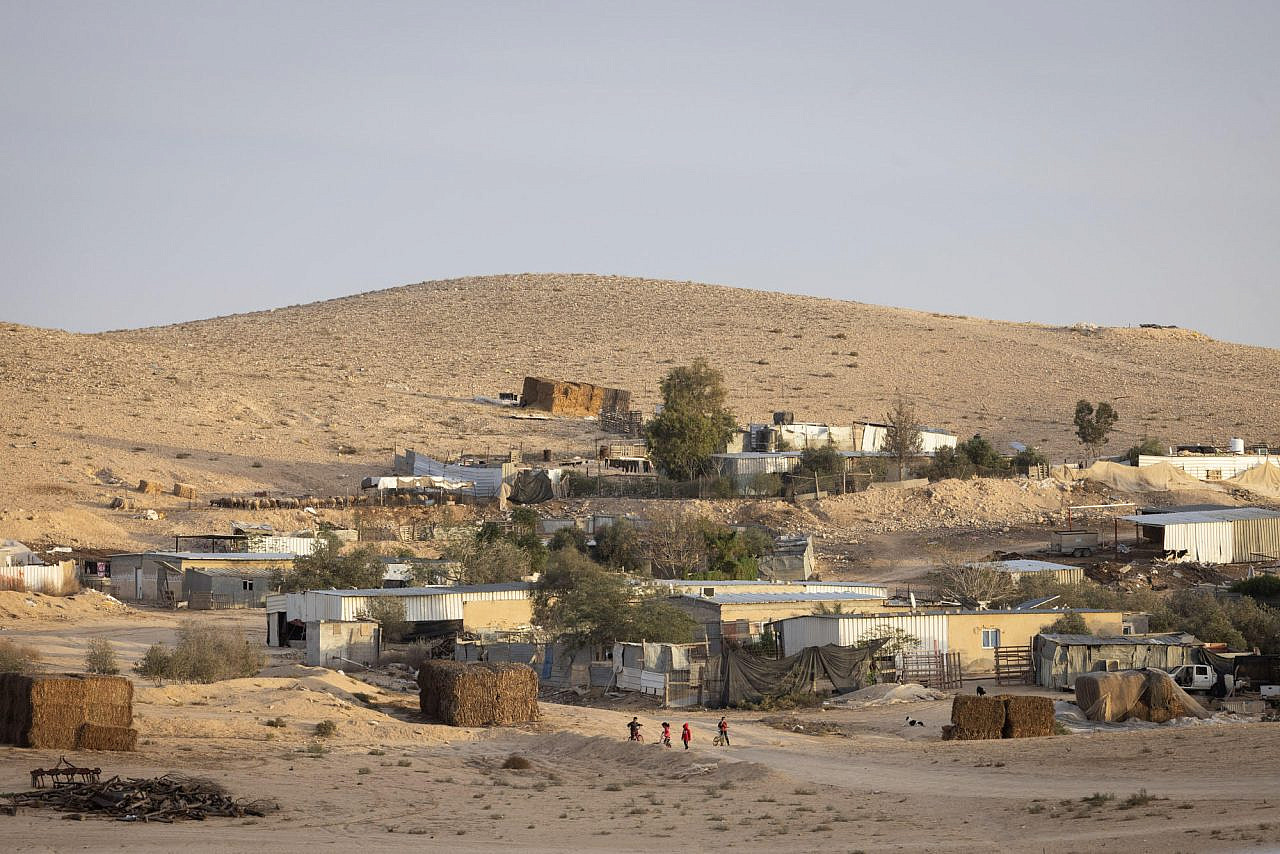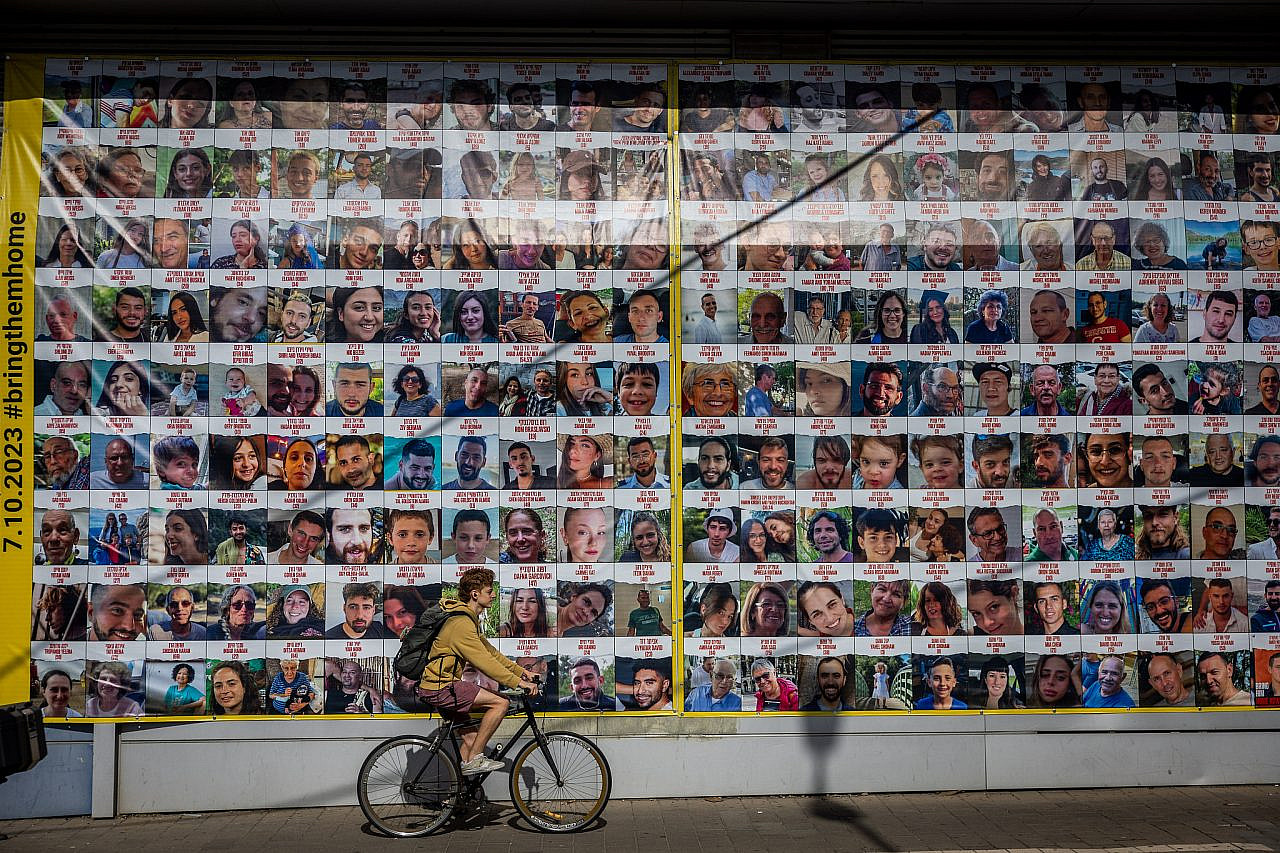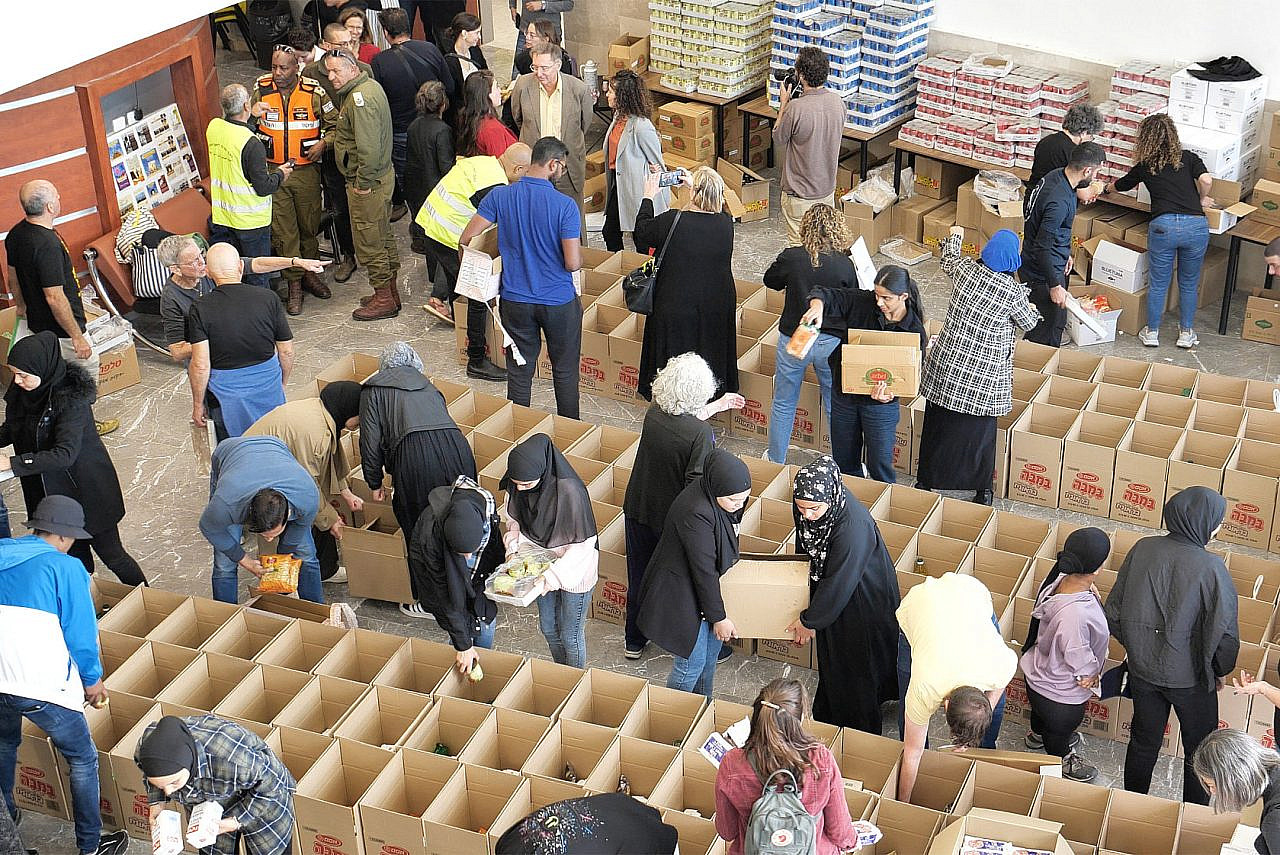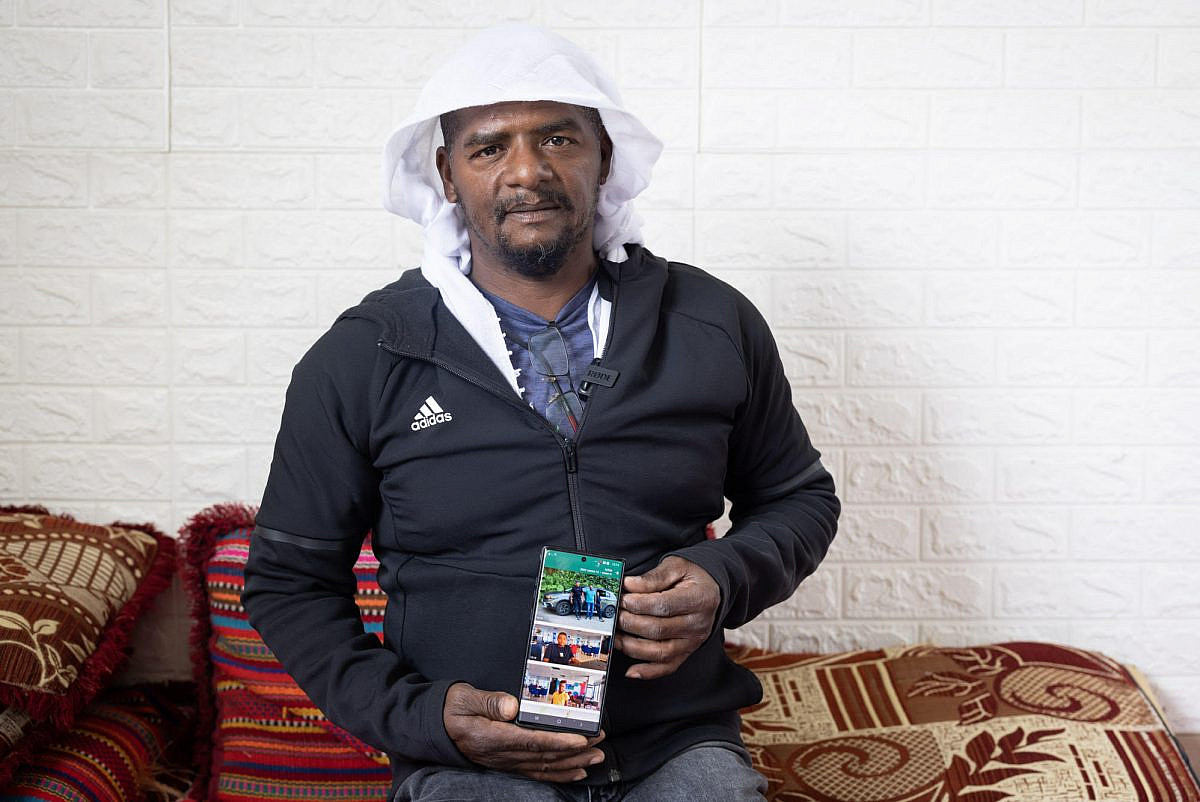Wahid al-Huzail is exhausted. For the past two months, the 51-year-old has been leading the Negev Bedouin Casualty Forum, a newly-formed NGO that was set up to support the families of Arab Bedouin citizens of Israel who were killed, wounded, or kidnapped during the Hamas-led October 7 assault. For all the extensive coverage in Israeli and international media on the plight of the hostages in Gaza and the communities most affected by the massacres, these victims have largely been forgotten.
Seventeen Bedouin citizens from the Naqab (Negev) desert were killed that day, both as a result of rockets fired from Gaza and after being shot by militants who breached the fence that encages the Strip. A further six Bedouins were kidnapped and taken to Gaza; two of them were released as part of a hostage-prisoner exchange during last week’s temporary ceasefire, while the other four remain captives. “Do you understand that nobody is considering us?” al-Huzail asked, with desperation in his voice.
Spanning nearly 5,000 square miles, the Naqab constitutes around half of Israel’s territory within the Green Line. Some 250,000 Bedouins live in the area — nearly half of them in villages that are unrecognized by the state, despite in many cases predating its existence.
In addition to being prevented for the most part from connecting to state-managed water and electricity infrastructure, as well as facing attempts by the state to displace them and expropriate their land, these communities are also particularly vulnerable in times of war: Israel has never built rocket shelters or sirens for them, and the Iron Dome missile defense system is not programmed to intercept rockets that are expected to land in their vicinity. And this is no oversight: Israel continues to invest in the construction of new Jewish-only communities in the same region, which receive all the infrastructure and protection denied to neighboring Bedouins.

Since October 7, al-Huzail has been in constant communication with the families of the Bedouin victims. For him, uplifting their stories is important both for the resilience of the community and for creating political pressure on the state to address their needs. But he confesses that he is finding it difficult to wake up each morning and summon the strength needed to endure the tragedy affecting his community.
The youngest Bedouin victim, 5-year-old Yazan Abu Jama’a, was killed when a rocket fired from Gaza exploded close to his home in the village of Arara al-Naqab during the first hours of the war. Another victim, 50-year-old Abd al-Rahman Nasasra, was shot dead while trying to rescue people from the Nova music festival that was attacked by Hamas gunmen. Construction worker Amer Odeh Abu Sabila, a 25-year-old father of two, was also shot while trying to save a Jewish family near the Sderot police station. The list goes on and on.
Then there are the abductees. Four of them were from the same family: Yousef al-Ziadna (53) and his three children, Hamza (22), Bilal (18), and Aisha (17), were all kidnapped while working at a barn on Kibbutz Holit (Aisha and Bilal have since been released). The other two Bedouin hostages are 53-year-old Farhan al-Qadi, who was kidnapped from Kibbutz Magen where he works as a guard at the packing house; and 22-year-old Samer al-Talalqa, who worked at Kibbutz Nir Am.
Kamel al-Ziadna, the cousin of Yousef, told +972 that the family are still praying that the remaining hostages will return unharmed. “There were and still are difficult moments, especially since we know nothing about our relatives who are still in captivity,” he said. “Our joy at the return of Bilal and Aisha is mixed with sadness because Yousef and Hamza are still there. We hope that all hostages will quickly return to the arms of their families.”

‘I believe that we will meet the challenges’
Bedouin culture places particularly high value on two traditional modes of community support: faza’a (providing aid as quickly as possible) and aouna (helping those in need). But in the aftermath of October 7, despite the community’s best efforts, those values have been stretched thin.
On top of grieving for those who were killed and fearing for the safety of those held hostage, the community is also having to deal with loss of employment: many Naqab Bedouin previously made a living working in communities that have been evacuated due to their proximity to Gaza, while others have lost jobs due to the pervasive atmosphere of fear and suspicion that is treating every Palestinian as a potential enemy. As a result, the community has been left wondering how faza’a and aouna can be sustained in a context where Bedouin life is not valued.
Ibrahim al-Hasanat, the director of Kafa for Social Change in the Negev, is running an aid center in Rahat — a city in the Naqab that is home to over 70,000 Bedouin citizens. Since the beginning of the war, he has been working closely with a coalition of several civil society organizations and the Rahat municipality to provide food, medicine, and other basic necessities to all the families who need them.
“Ninety percent of Bedouin women work in the agriculture sector near Gaza,” he told +972. “Their salaries are low; they live from hand to mouth. Once everything stopped, these women — some of whom are single mothers — had no way to feed their children. Our aid center was designed for these difficult cases.”

Al-Hasanat explained that although he has been doing this work for more than 15 years, providing aid to more than 2,000 families in that time, the spike in demand since the war began has been unprecedented. Nevertheless, he is confident that they are up to the task: “I believe that through the coalition formed following the war, we will be able to meet the challenges, and I am sure that we will succeed despite the great difficulty we are facing.”
Bedouin citizens are also mourning losses outside of their community — particularly that of Vivian Silver, a 74-year-old resident of Kibbutz Be’eri who was originally thought to have been kidnapped but whose remains were identified several weeks into the war. “For 38 days, I imagined her making a revolution there [in captivity in Gaza], talking to everyone about her work and promoting peace,” said Sliman al-Amour, the co-CEO of AJEEC-NISPED, a joint Arab-Jewish group co-founded by Silver that works to promote shared society and Arab community development in the Naqab. “For 38 days we waited and prayed for her return.”
Sliman, who is from the Bedouin village of Kseifeh, said that he is struggling to accept the news that Silver is among the victims of the October 7 attacks. Silver had previously served as co-director of the organization and remained active on the board of directors until she was killed. She worked tirelessly to organize civil society groups working in the Naqab and helped create a strong network of local groups working in the various communities.
“No matter where she was, she was always received with the respect she deserves for her work as a peace fighter recognized not only in the Naqab but around the world,” Sliman explained. “She has initiated and managed many projects within Gaza and the West Bank and worked in every possible way for a true partnership [between Israelis and Palestinians].”
Most read on +972
That vision of partnership has been on display as Arab and Jewish civil society organizations have joined together in Rahat to support the families of all victims, no matter their background. Fouad al-Ziadna, a relative of the four Bedouin citizens taken hostage from the same family, directs the Rahat Community Center, which hosts a makeshift headquarters for joint projects providing aid in the region. In this time of crisis and tragedy, Ziadna emphasized that he and his staff and volunteers are continuing to do what they do best: “When there is a big event, we are not watching from the sidelines but rather working for the welfare of people who now need it most.”
But solidarity and mutual aid only goes so far, and Naqab Bedouins see the war’s disproportionate impact on their community as pointing to a deeper problem of neglect by the Israeli state authorities. “It’s not for nothing that the first people killed by rockets in the Naqab on Saturday morning [October 7] were seven Bedouin citizens,” al-Amour, the co-CEO of AJEEC-NISPED, expressed. Referring to the unrecognized villages, he added: “100,000 residents live in exceedingly harsh conditions and a complete lack of protection.”




